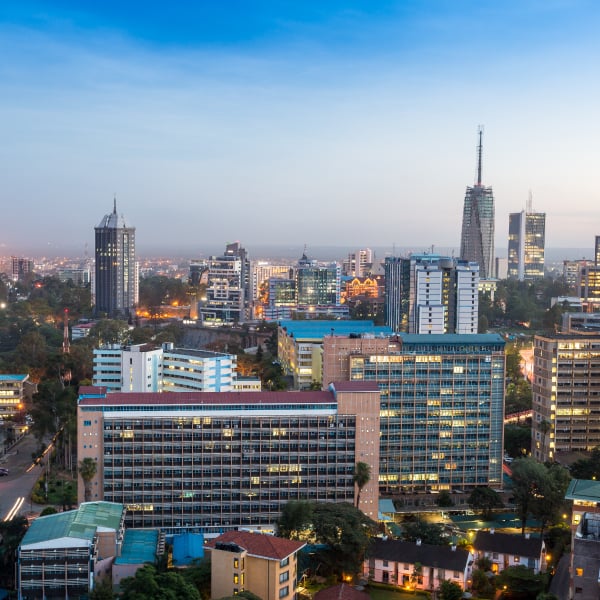AMR: Kenya

We forecast GDP growth of 5.4% and 4.3% in 2022 and 2023 respectively. We expect the C/A deficit to reach 6.7% and 6.0% of GDP in 2022 and 2023 respectively. We see USD/KES trading around 120.1 by the end of the year.
Medium-term outlook – slowing growth
We retain our GDP growth forecast for 2022 and 2023 at respectively 5.4% y/y and 4.3% y/y. While the lifting of the final set of public health restrictions in Mar might have bumped up economic growth, rising inflation, renewed lockdowns in China as well as the Ukraine war might soften consumer demand and companies’ output as well as overall output. Economic activity in H1:22 has likely been recovering faster, too with transport, trade, manufacturing, educational and tourism (hotels and restaurants) sectors likely to remain the main beneficiaries. Agriculture however, faced lower-than-average rainfall during the last short rain season (Q4) as well as the current long rain season (Q2); it also is being encumbered by high and still rising fertilizer prices as well as shortages due to the Ukraine war.
This, and extensive renewed lockdowns in China, have exacerbated supply chain disruptions, seen energy prices
rise further, and inflation speed up, too. All this might soften companies’ output and incur second-round inflation pressures. This would ultimately crimp aggregate demand. We therefore foresee economic activity in H2:22 slowing down due to the upcoming general elections and adverse base effects after a period of fewer public health restrictions.
Balance of payments – larger trade and C/A deficits
The current account deficit may deepen from 5.5% of GDP in 2021, to 6.7% in 2022, then narrow to 6.0% in 2023. The trade deficit too may deepen as import prices increase and export volumes to Russia and Ukraine decline. A larger C/A deficit may be financed by external debt receipts. However, higher Eurobond yields may force the government to rely increasingly on concessionary external debt. In 2022, the goods trade deficit too may deepen considerably.
The Ukraine war has bumped up key import prices such as fuel, grain and fertilizer. While higher fuel prices ideally lead to lower fuel consumption, fuel consumption could remain elevated due to fuel subsidies (which could eventually leave the overall fuel import bill much higher). Exports however could be subdued. Export volumes of tea and horticultural products to Russia and Ukraine will be undeniably lower, as might export demand from the rest of Europe in the case of a recession. Service receipts too may be subdued. Even though, tourist arrivals from external markets are likely to increase as public health restrictions around the world are eased, the upcoming elections may suspend the recovery in H2:22.
Monetary policy - neutral, with a hawkish bias
We expect the CBK to leave the key policy rate unchanged at 7.0% in 2022 to encourage a recovery in private sector credit growth. While inflation is likely to rise in 2022, it will likely remain within target due to fuel subsidies. The KES may weaken in 2022, but gradually so, leaving room for the apex bank to stay on hold. Private sector credit growth will likely remain relatively subdued due to less demand and credit supply. While the lifting of public health restrictions should incur a recovery in credit demand, geopolitical risks and Kenya’s upcoming elections might constrain it.
We estimate that inflation will average 6.4% in 2022, from 6.2% in 2021, due to supply chain disruptions, energy prices, and rising food inflation. Should inflation rise considerably and/or the KES weaken rapidly, there might be a significant hike in the policy rate. Indeed, in 2011, the CBK hiked the policy rate by 400 bps in Oct due to high inflation and a then rapidly depreciating currency.
FX outlook - further near-term weakness
We expect the KES to weaken further, ending 2022 at 119-121 to the USD due to a deeper trade deficit, higher dividend repatriations by corporates, and increased external debt repayments by the government. We see the USD/KES ending Q2:22 at 117.5 due to dividend repatriations. Corporates have now resumed paying dividends after a 2-y break because of the pandemic.
We don’t expect the central bank to intervene significantly in the near term to defend the KES. While FX reserves are currently comfortable at USD8.4bn (5.0-m import cover) and could rise further due to additional debt receipts (from the IMF and World Bank), the bank will likely prioritize those reserves for upcoming debt repayments. The bank might also argue that the KES has been more stable than most other African currencies, therefore implying that no intervention would be necessary.
Download the annual indicators.